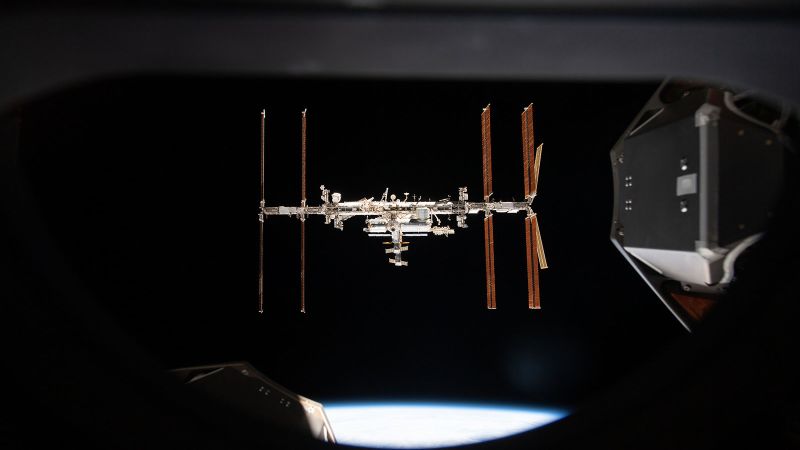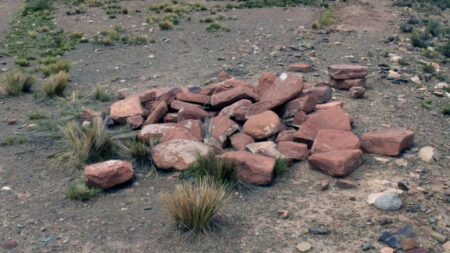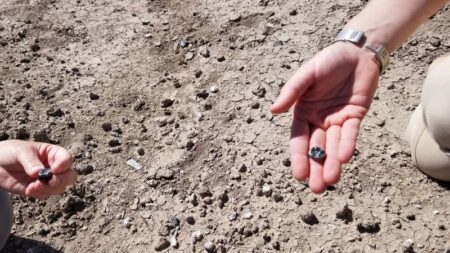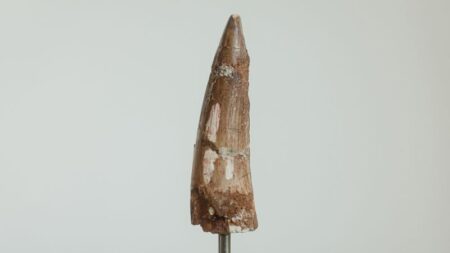The recent launch of the Axiom Space Mission 4 (Ax-4) has highlighted significant concerns regarding air leaks at the International Space Station (ISS), a location frequently visited by astronauts and researchers. This mission took off from NASA’s Kennedy Space Center in Florida at 2:32 a.m. ET on a Wednesday morning, having faced delays due to ongoing investigations into these troubling leaks. These leaks are located in a Russian-controlled module that has been sealed off from the rest of the station for years.
Notably, while air was previously leaking from this module, recent observations indicated that the leak had ceased. Originally, this might have signaled a rectification of the issue, perhaps due to successful sealing efforts on the module’s exterior. However, NASA engineers have raised alarm bells indicating that the situation might be more complex. There is a genuine concern that the module might be holding stable pressure because of a new leak forming within an interior wall, which could allow air from the main body of the ISS to flow into the affected area. This raises the unsettling possibility that the entire space station could be at risk of losing air.
The uncertainty surrounding this situation has prompted NASA to delay the Ax-4 mission initially, as they aimed to thoroughly investigate the underlying issues with the leaks. In a statement released on June 14, NASA disclosed their concerns and explained that the launch had been postponed while teams worked to pinpoint the cause of the air loss. Monitoring techniques involved altering the pressure in the transfer tunnel connecting the affected module to the ISS, allowing teams to evaluate both the transfer tunnel and hatch seals methodically.
Despite new knowledge about the leak not being fully realized after further investigations, NASA and Roscosmos, the Russian space agency, have collaborated in analyzing the situation. They have agreed to adjust the pressure in the transfer tunnel; however, further evaluations are ongoing. Curiously, NASA has deferred additional comments regarding the leak’s safety implications to Roscosmos, which has been noticeably reticent in responding to inquiries about the active conditions of these leaks.
The first signs of the leaks appeared back in 2019 within a tunnel linking the Russian module Zvezda to a docking port for incoming spacecraft. The nature of these leaks is such that they comprise tiny cracks that are predominantly invisible to the naked eye, complicating efforts to patch them effectively. The urgency surrounding the situation intensified the previous year, as data indicated the leak rate had escalated to its highest level. Disparate views emerged between U.S. and Russian technical teams regarding the safety of continued operations aboard the ISS. Bob Cabana, chair of NASA’s ISS Advisory Committee, emphasized the prevailing difficulties in reaching a consensus on the nature of the threats posed by the leaks.
While NASA and Roscosmos endeavor to navigate these concerns, the four crew members of Ax-4 have languished in quarantine in Florida for about a month, awaiting their opportunity to launch. The Ax-4 crew includes notable former NASA astronaut Peggy Whitson, who now works for Axiom Space, alongside three spaceflight novices ready to make history by being the first from their countries to visit the ISS: Shubhanshu Shukla from India, Sławosz Uznański-Wiśniewski from Poland, and Tibor Kapu from Hungary. They are scheduled to assist in around 60 scientific experiments during their anticipated two-week stay in space.
The potential for further exploration of how the leaking Zvezda transfer tunnel impacts broader operations on the ISS remains uncharted. Despite Ax-4 being a private mission, NASA and Roscosmos continue to maintain regular crew rotations of astronauts and cosmonauts to keep the ISS staffed and operational. Upcoming missions include Crew-11, set for launch as early as July, which will include personnel from NASA, the Japan Aerospace Exploration Agency, and Roscosmos, all preparing for an extended six-month residency in space. The overarching safety and operational integrity of the ISS will undoubtedly remain under scrutiny as these missions continue amid repair and assessment efforts related to the leaks.












